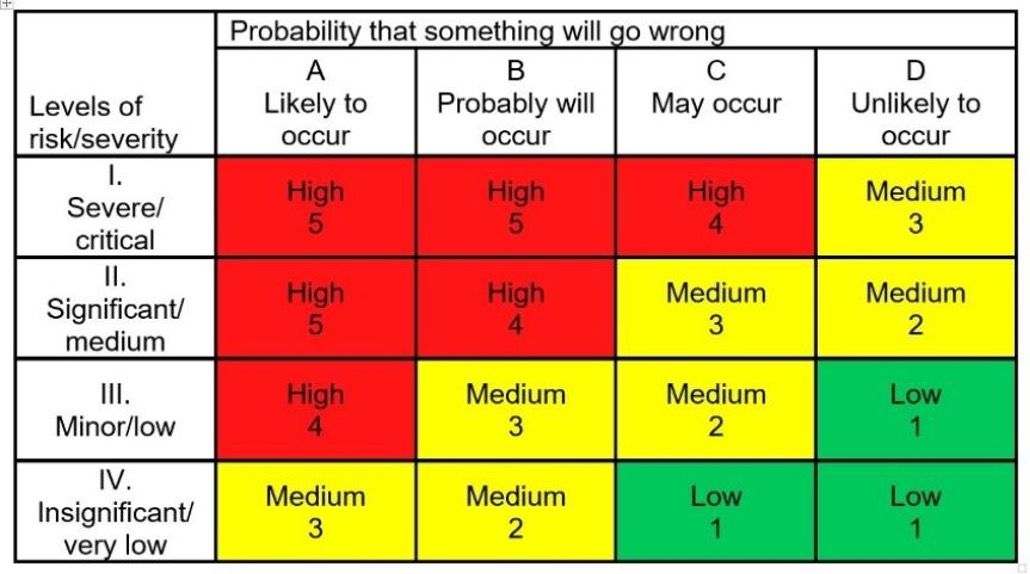Risk Management for 4-H Youth Development Work, Risk Management for 4-H Youth Development Work, is intended to prepare UF/IFAS Extension County faculty, staff, volunteers, and youth for the important task of providing best practices in risk management strategies.
Our goal is to conduct educational events and activities that coincide with the 4-H mission and mandates while protecting the safety of participants, sponsors, property, finances, and the goodwill/reputation of the 4-H name. The inherent risk of events and activities can be mitigated through planning and preparation. This risk management guide has been created to outline ways to prepare for and deal with the specific risks associated with your program.
Early planning is key to conducting successful events and activities. This Pre-Event Planning Guide and Matrix as well as the Risk Management Checklist are tools used during event/activity planning to determine the amount of risk. The Guide can be used to assist with planning an event that creates a safe environment for all work with youth.
Planning Guide
Title of Event/Activity: ____________________________________________________
Individual(s) Responsible for Coordinating Event:
______________________________________________________________________
Name Position Email Phone Number
______________________________________________________________________
Name Position Email Phone Number
Event Level:
- Club
- County
- Multi-County (District)
- State
- National
Event Occurrence:
- New Event (First Time)
- Reoccurring
Type of Event/Activity:
- Fundraiser
- Retreat
- Competition
- Conference/Seminar
- Social Activity
- Program
- Camp School Enrichment Program
- Organized 4-H Club
- After-School Program
- Other: _________________________
Scheduled Date(s)/Time(s) of Event/Activity (list all dates activity is planned to occur):
_______________ _______________ _______________ _______________
Start Date:
Start Time:
End Date:
End Time:
Location(s) of Event/Activity:
Primary: __________________________ Backup: __________________________
Number of People Attending: ________
How does this event/activity promote the mission of the 4-H program?
Provide a brief description of the planned event/activity.
Matrix
Step 1: List all activities that could cause illness, property damage, injury, financial loss, or negative publicity for the organization.
Step 2: Identify the type of risks associated with each activity. Is this activity associated with:
- People—Youth, volunteers, employees, clients, donors, board members, and the public.
- Property—Buildings, facilities, equipment, materials, copyrights, and trademarks.
- Finances—Sales, grants, and contributions.
- Goodwill/Reputation—Stature in the community and the ability to raise funds and appeal to prospective volunteers.
Step 3: Use the Matrix below to assess the current level of risk with each activity you listed in Step 1. Determine your initial score by finding the intersection of the probability that something will go wrong and the level of risk with the highest score. The lower the score, the lower your risk.

Credit: UF/IFAS
Levels of Risk
I. Severe/Critical—May result in death.
II. Significant/Medium—May cause severe injury, major property damage, significant financial loss, and/or negative publicity for the organization and/or institution.
III. Minor/Low—May cause minor injury, illness, property damage, financial loss, and/or negative publicity for the organization and/or institution.
IV. Insignificant/Very Low—Hazard presents a minimal threat to safety, health, and well-being of participants.
Probability That Something Will Go Wrong
A. Likely to occur immediately or in a short period of time; expected to occur frequently.
B. Probably it will occur in time.
C. May occur in time.
D. Unlikely to occur.
_____ Initial Score _____ High _____ Medium _____ Low
Step 4: Brainstorm and list methods to manage risks and reduce the initial score.
Modifications to Event/Activity
-
Reduce Risk—Change the activity or conditions to decrease the likelihood that a loss will occur.
-
Avoid the Risk—Do not conduct the activity if the risks are too severe and the possibility of occurrence is high.
-
Transfer the Risk—Find someone to share some of the risk. Ways to share the risk include carrying accident or medical insurance, using informed consent forms, or paying vendors for services.
-
Assume the Risk—Accept the risk and prepare for the possibility of loss.
Step 5: Return to the Matrix to reassess the risk associated with each activity in Step 1 using the methods to manage risk.
_____ Final Score _____ High _____ Medium _____ Low
Step 6: Determine whether to conduct the event and/or modify activities.
After assessing the risk and making modifications, we have decided to:
_____ Conduct the activity _____ Not conduct the activity
Post-Event Assessment
-
Was the event/activity a success? Why or why not?
-
Did you encounter any unforeseen problems? _____ Yes _____ No
If yes, how can you better prepare in the future?
3. Are you going to continue this event? _____ Yes _____ No
If yes, what changes would you recommend for the future?
References
Herman, M. (2011). Ready or Not...A Risk Management Guide for Nonprofit Executives. 2nd edition. Leesburg, VA: Nonprofit Risk Management Center.
Nonprofit Risk Management Center. (2017). Nonprofit Risk Management Center. Accessed on December 10, 2017. https://www.nonprofitrisk.org/
USDA. (2017). EDEN: Extension Disaster Education Network. Accessed on December 10, 2017. https://extensiondisaster.net/
USDA. (n.d.). U.S. Department of Agriculture. Accessed on December 10, 2017. https://www.usda.gov/